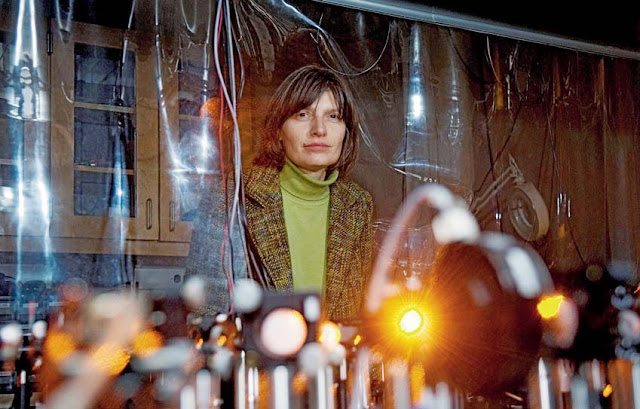The speed of light is a universal physical constant that is important in many aspects of physics. Light travels at a continuous and finite speed of 186,000 miles per second. But did you have note that the speed of light can be manipulated?
In 1999, Lene Hau, a physicist from Denmark, was the first to slow light down to only 38 mph. Later, she could totally stop, control, and move it.
Lene Hau’s Research on the Speed of Light
After years of serious effort, Hau mastered the art of riding a bicycle at the speed of light in 1999. Instead of cycling faster, she slowed light down to a stunning 60 kilometers per hour, accomplishing this impressive feat. She achieved something even more extraordinary, stopping light in its tracks.
Light travels at only 186,000 miles per second. Hau has known this but never thought breaking the light-speed slow-speed record. She begins a new research endeavor shortly after she got there: looking for the Bose-Einstein Condensate, a brand-new state of matter.
Atoms are very sensitive to temperature; at a few millionths of a degree above absolute zero, they will lose their individuality and merge.
This collection can behave like a single super atom at very low temperatures; it is referred to as the Bose-Einstein Condensate after the two senior physicists whose research predicted its existence in 1924.
“I was so excited to see what this new state of matter was like. We were extremely happy. We had achieved success.” Lene Vestergaard Hau, Physicist
The Bose-Einstein Condensate was eventually formed in June 1997 after Hau and her teammates successfully cooled the atoms.
After making it, Hau and her colleagues started looking for uses for the condensate. They discovered they could make light pass through the previously opaque condensate by accurately manipulating it with laser beams. And they noticed that no material had ever been identified that could delay light as efficiently as the massaged condensate.
By making use of an electromagnet, a 0.2-millimeter-long cigar-shaped condensate was suspended inside a vacuum chamber. They used an accurate calibrated laser beam to illuminate the cigar from the side before firing a pulse of laser light along its long axis.
She discovered she was moving much quicker than her light beams when she took a flight to Copenhagen that summer. She published her research that autumn when she successfully got light to move at a bicycle’s pace.
Her team advanced their study this year by successfully stopping all light inside a Bose-Einstein Condensate. The scientists immediately shut off the coupling laser once the light pulse had been totally compressed and trapped within the condensate. The light became shut in inside after this change. The initial light pulse emerged from the other end when they turned on the coupling laser back.
Reference(s): Physics Today and Physics Central



No comments:
Post a Comment